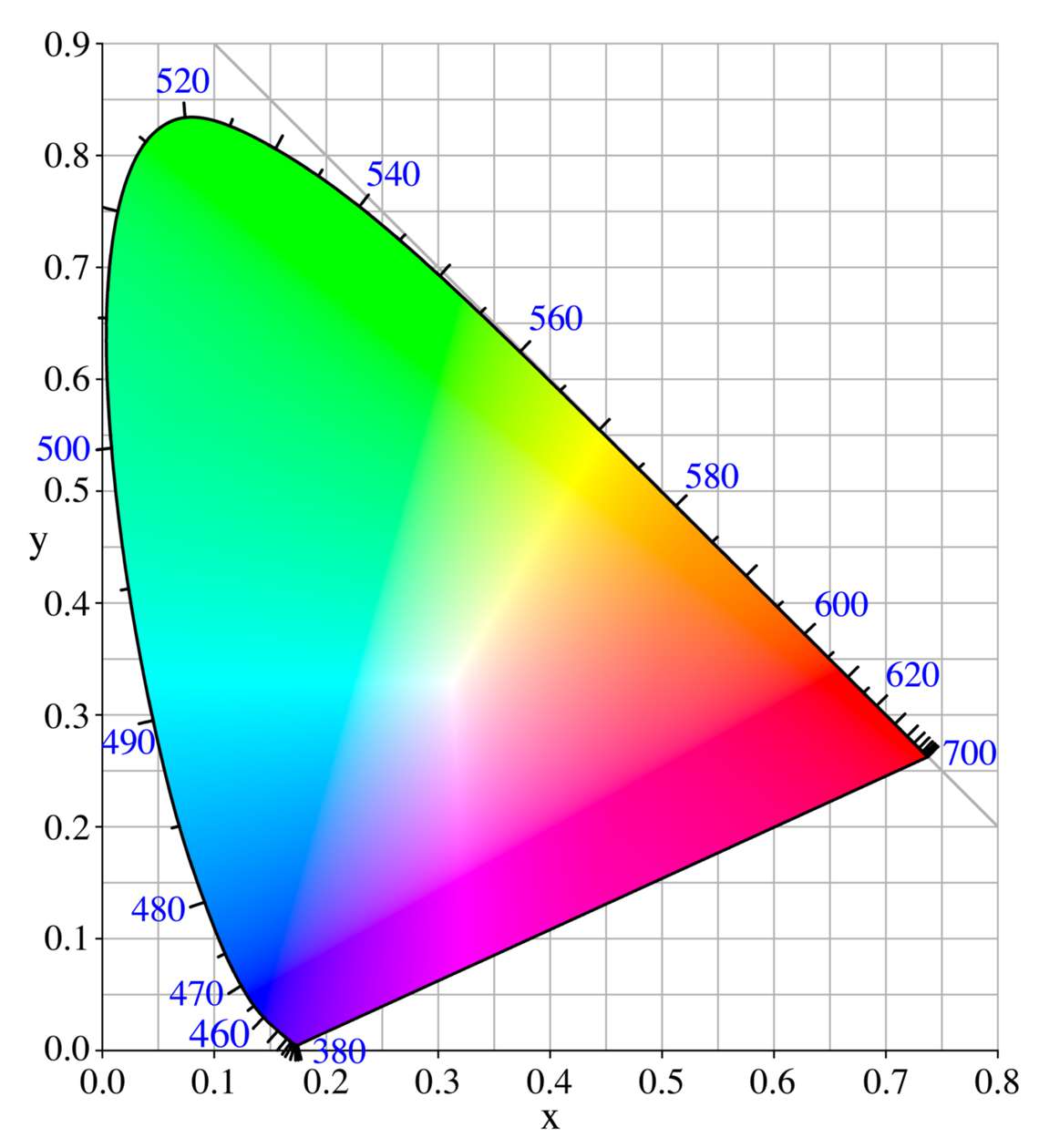Forewords
When you are purchasing a professional monitor, you will hear about something like 72%NTSC, 100%sRGB, Adobe RGB and DCI-P3. They really look large and luxurious, but do you really know their meaning?
Definition
In fact, all the specifications above is one kind of gamut. Gamut is also called Color Space, it’s a method to code colors which means the sum of a image system colors. As we all know that colors are made of three-primary colors, R-red, G-green, B-blue. All colors could be mixed with these 3 colors. In order to make people to know the gamut better, CIE (International Commission on illumination) has established a CIE-xy chromaticity diagram. In this coordinate, the color gamut range that can be represented by a triangle area composed of RGB (red, green, and blue) three-point connections. The larger the triangle is, the wider the color gamut range of this display device.

Four specifications of regular monitor gamut
The most regular gamut are sRGB, AdobeRGB, NTSC and DCI-P3, in which NTSC is now used most widely, sRGB is a very old specification, Adobe RGB is mostly used for professional designers, and DCI-P3 is the preference for TV and film makers.
sRGB

It’s one of the oldest specification of gamut which still has great influence around the world. Established in 1996 by Microsoft and HP, it was very welcome by many intra-industry manufacturer. However, it was too old, back then, the CRT monitor had terrible color rendition. sRGB color space covers only 1/3 of a standard CIE 1931 XY gamut. Glaring at it, you will find a severe problem, sRGB has a small covering for the green part.
Adobe RGB

To solve this issue, Adobe RGB was released by Adobe in 1998. It has a better color rendition for green and blue colors, covering around 1/2 of a standard CIE 1931 XY gamut. It was established for including sRGB (for PC) and CMYK (for printing), so the digital photos can not only be shown and edited on PC correctly, but also could be printed without color difference. With wider color covering than sRGB, so Adobe RGB was preferred by photographers and designers instantly, sidely used on photography and post-production.
NTSC

NTSC is short for National Television Standards Committee. They have developed a standard American TV protocol for transmitting and receiving. From the CIE-xy chromaticity diagram, we can see that it has the biggest covering range. But it has some disadvantage like: unstable color rendition, and color differences.
Normally, there are conversion formulas for these 3 gamut, 100%sRGB≈72%NTSC, 100%Adobe RGB≈95%NTSC. Different manufacturer will advertise their product with different terminology, we need to keep our eyes sharped while choosing one of them.
DCI-P3

Normally used on digital cinema, PCI-P3 is a gamut that led by human visual experience. It matches all the gamut shown on movie scenes as far as it can. It has covered around 45% of a CIE-xy chromaticity diagram, but with more red/green colors range. If you are a video editor or a filme maker, DCI-P3 gamut is a very suitable one for you.
Conclusion
You will need to know it’s wrong that the higher percentage of a gamut, the better is a monitor. Different gamut has different specifications, and they will be applied for different usage. Please notice that, 100%sRGB gamut monitor is approximately equal to a 72% NTSC one, this is a good screen. Like our PD1560, PD1561, PD1161, they both have 72% NTSC gamut. Monitors with 85% NTSC gamut or 85% AdobeRGB gamut above is the excellent one. You can choose our PD2200 with 92% NTSC gamut, and PD156 PRO with 88% NTSC gamut. If some monitor’s gamut is below 65%sRGB or 45% NTSC, don’t think of it, they are just trash, and will do harm to your eyes.
If you have any question, please contact us via email: service@gaomon.net


Leave a Reply